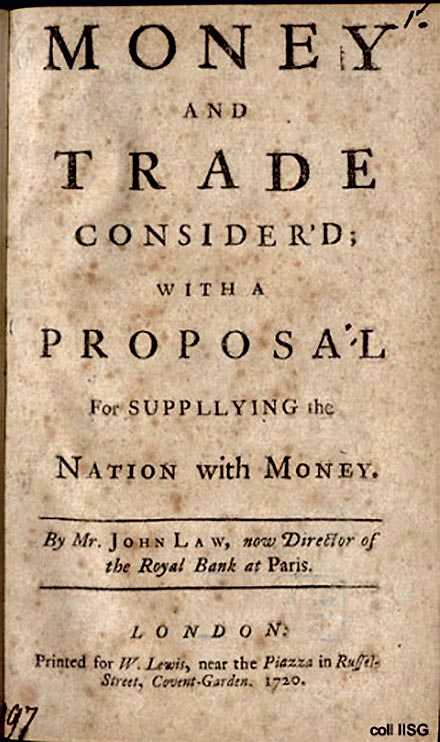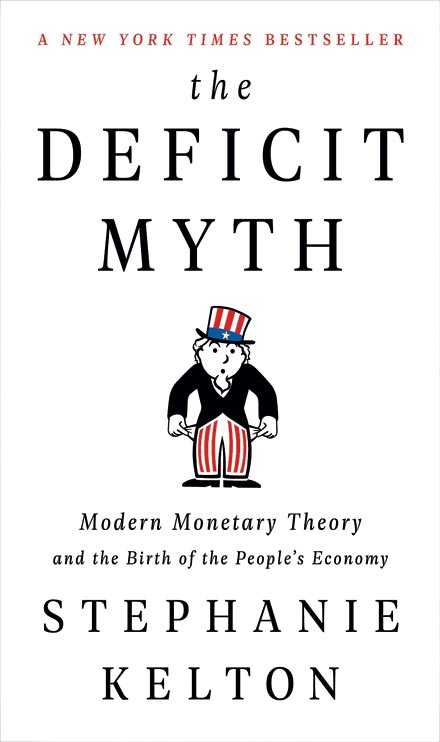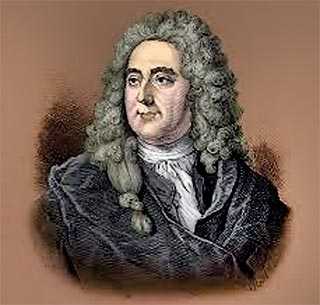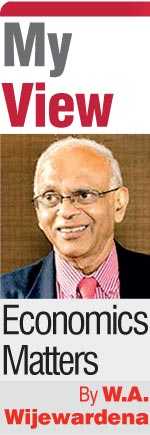Saturday Nov 22, 2025
Saturday Nov 22, 2025
Monday, 21 December 2020 00:30 - - {{hitsCtrl.values.hits}}

John Law book cover

The Deficit Myth
 |
| John Law |
 |
| Stephanie Kelton
|
Aseni, whiz-kid reading for her AL and pretty much interested in economics, had read in the newspapers that during the Budget debate an Opposition Parliamentarian had accused the Government of following a new ideology called Modern Monetary Theory as its strategy. She had tried to understand what this had meant but could not find any literature. So, she asked her grandpa, Sarath Mahatthaya, an ex-officer of the Ministry of Finance, about it. The following is the conversation between the two:
Aseni: Grandpa, I have been reading the Budget debate in Parliament in newspapers and noted that one of the Opposition MPs had accused the Government of following an ideology called Modern Monetary Theory. I know Monetary Theory but have never heard of Modern Monetary Theory. What is it, Grandpa?
Sarath: I also read about it. But none of the Government MPs had tried to counter him. That is the sad state of the debates in Parliament. They just accuse each other by slanderously digging into their past and never think it their duty to debate an important concept like this.
Modern Monetary Theory, also called MMT, is not a new concept though it is called modern. The theory behind it was first suggested by the Scottish economist John Law in 1705 in a book he published for use by Scottish Parliament. The title of the book was ‘Money and Trade Considered: With a Proposal for Supplying the Nation with Money’. You can log into the website at https://ia800901.us.archive.org/2/items/moneytradeconsid00lawj/moneytradeconsid00lawj.pdf and read it for yourself. Historian Gavin John Adams who studied John Law in detail says that both Adam Smith and John Maynard Keynes had drawn on John Law without acknowledging him. So, it is not modern. It is even predated to Adam Smith.
Aseni: Wow, Grandpa, you have dropped a bomb on my head. Up to now, I had thought that Keynes presented an original theory. But now you say that there is this chap called John Law who had done it before Keynes. How does Keynes compare with John Law?
Sarath: In a nutshell what John Law said was that money belonged to King, and King can issue money in multiple terms by changing from metal money to paper money. He said that instead of using silver as reserve, the King can issue paper money by using land as the reserve. Since land also belonged to the King and it was available without shortage, the King can issue paper money in large quantities. That money will finance trade. The consequential increase in trade will bring prosperity to people.
Keynes also suggested the same but with reference to the total output in an economy which we now know as the Gross Domestic Product or GDP. He did not confine himself only to a subset of the total output called international trade. In fact, in the Keynesian theory, there was no room for international trade at all.
Aseni: What happened? Was John Law successful in getting the Scottish Government to adopt his policy?
Sarath: Not in Scotland but in France. That was also an interesting story. In a duel, he had killed a man and was being incarcerated in jail. He jumped the jail and fled to France. That was a good time for him because France had been waging wars with other nations. At that time, the French economy was in a mess. Hence, King Louis XV who had succeeded Louis XIV was in readiness to receive advice even from the Devil. This was fertile ground for Law to win the confidence of the young and inexperienced monarch. So, he became a member of the inner circle of the King of France.
Aseni: What happened then?
Sarath: He was first appointed as the Controller General of Finances of France. Then, while holding that position, he persuaded the monarch to allow him to establish a private bank called Banque Generale Privee which later became Banque Royale in 1717. Three quarters of its capital consisted of government bills and government accepted notes which are liabilities of the King. The bank accepted deposits in silver coins and issued paper money called Ecus on the strength of those coins and the government notes. As a result, it virtually became the central bank of France. But the economic mess had made France’s economy stagnant. Its national debt was mounting. It had amounted to three billion Livres, the currency used in France at that time. But the Government’s income was a peanut at only 145 million Livres.
In this background, Law emerged as the savior. He suggested that his bank will buy back French national debt using the proceeds of the IPO, the rest of the debt to be assigned to shares in ventures and new circulation currency called Ecus to be issued by the Bank in bigger volumes. That money will promote trade, increase employment and economic growth pushing France out of economic bankruptcy. Hence, it was the use of loose monetary policy to rescue France. You will see that this is the same strategy which is being suggested by some today to rescue Sri Lanka’s economy which is also in a mess.
Aseni: How did he operate it? What was his modus operandi?
Sarath: It was a very simple system. The government would assign the national debt to his bank. He then asked people to buy that debt by depositing the silver coins they were holding with Law’s private bank. Law in turn issued paper notes in Ecus to them so that they could use those paper notes for exchange purposes. But Law had issued Ecus many times higher than the silver coins in deposit with him. This is what is known today as the fractional reserve system. You keep only a smaller amount of real assets – in this case silver coins – to back the money you have issued. This is a system of converting public debt into money and known as monetisation of debt.
Aseni: What was the result? Was Law able to rescue the French economy?
Sarath: No. John Law issued too much money through his private central bank. He could not resist the temptation to issue more paper money than the deposits of government debt in his bank. This led to price inflation reducing the value of the paper money his bank had issued by half. At that stage, there was a bank run because people wanted to get their silver coins back. But silver coins were a small fraction of the total amount of Ecus out there in circulation. Hence, not everybody could get their coins back. And some had to lose.
You can compare it to a failed finance company today. When depositors go the finance company to get their money back, there is not enough money in the company. Therefore, John Law’s bankrupt private central bank led to the destruction of the French economy and its monetary and financial system. What was proved by John Law saga is that if you issue money in excess, for whatever the reason, you will have to bear the consequences later.
Aseni: So, the origin of what is now called MMT was a disaster. Then, why is it being canvassed today?
Sarath: Maybe due to two reasons. One was that John Law saga happened some 300 years ago and not many are aware of it. The other is that MMT is suggested not by practical central bankers but by academics who have no experience in money and central banking. It is only those who have grown up within a central bank system would know exactly what money can do and what money cannot do. Money has no real existence like, say rice or coconuts. It is only a vague notion in our heads. It is useful so long as it could buy us rice or coconuts. Therefore, money cannot produce rice or coconuts. If people produce rice or coconuts by working hard, and money can simply help us to exchange them. Modern monetary theorists believe that money can produce rice or coconuts. So, for them the path to attain prosperity is producing more money.
Aseni: But who are those who are advocating MMT? Are they in the mainstream of economics?
Sarath: No, they are just a breakaway group from mainstream economics. But they are very powerful today because what they say is sweet music to politicians who do not have enough tools to resolve deep economic issues. After John Law, the German economist G.N. Knapp came up with an interesting idea in 1895. What he said was that governments can influence economies by issuing their own tokens – called Charta in Latin – to people. In today’s sense, the rupee notes and coins issued by our Central Bank are simply Charta.
The dogma of using these Charta for economic prosperity is known as Chartalism. But it had a natural death in the 20th century without supporters who believe in its validity. But a group of economists who call themselves Post-Keynesians have revised the old Chartalism in the form of MMT. The leading advocates of MMT today are Warren Mosler and L. Randall Wray of the University of Missouri – Kansas City, USA, and Bill Mitchell of the University of Newcastle in Australia. They have been joined by another strong advocate of MMT recently. That was Stephanie Kelton of Stony Brook University in USA who published in 2020 a book titled ‘The Deficit Myth’. The subtitle of the book is the interesting one. It says that the book covers the Modern Monetary Theory and the Birth of the People’s Economy.
Aseni: I suppose that Kelton’s book is the latest hotcake in MMT. Am I correct?
Sarath: Yes, you are. It is not only about MMT but also about a wide range of other crucial economic issues we are facing today. It talks about poverty, inequality, job creation, healthcare coverage, climate change and many more. These are all very ambitious projects, but they all need money. But money has become a constraint because we are trapped in a myth, according to Kelton, called the deficit myth.
We have been asked by conservative economists to treat the government budget also like a household budget. But Kelton says there is a difference because households cannot finance their budget by printing money. So, their expenditure should be within the budget. But the governments can print money and finance. Therefore, the warnings given to us by conservative economists that deficits are harmful to the future and they displace private investments and pass a burden on our children and grandchildren are all myths. Societies can solve all these economic problems if they could bust these myths, according to Kelton.
Aseni: On the face of it I find that she is correct, Grandpa. Is there any hidden thing which I do not understand?
Sarath: Not a hidden agenda. But its basic philosophy is subject to debate. The arguments presented by MMT are built on the following. They say budget deficits do not matter. Monetary policy cannot have an independent existence and it is subordinate to budgetary policy. Therefore, central banks should be ready to print money to finance budgets. Advocates of MMT are not concerned about small amounts of money being printed by central banks. It is big money like the use of big data.
The objective is to print money in big volumes to eliminate unemployment, increase economic growth, reduce poverty, tackle climate change etc. These are all burning issues in today’s socio-economic fabric of the globe. MMT says it has the solution and not those conservative economists who ask us to tighten our belts. No one is willing to tighten his belts. Hence, if there is a solution that obviates the necessity for tightening our belts, we are ready to embrace it.
Aseni: Has Kelton explained all this?
Sarath: Yes, she has big solutions to big problems. In a way, they are also slogans. Things like we must build a more just economy that works for the many and not for the few had been there for many millennia and no one can object to it. Another is people and planet should have the top priority. Again, you cannot object to it. Yet another is that we should have an economic system in which we can afford to invest more in healthcare, education, and resilient infrastructure. In a nutshell, she says do not worry about scarcity. Look for the opportunity that you can create. If there is a funding problem, there is a source. That is, print money.
Aseni: I recall that similar bold statements were made by Robert Mugabe of Zimbabwe. In an interview with a journalist from Time magazine, he had said that if there are no funds for his projects, he would make available funds by printing money. But in his country, eventually inflation rose to one billion per cent and it destroyed the monetary system of that country. Are the propositions of MMT similar to that?
Sarath: Yes, they are. One of the bold statements of Kelton is that taxes are charged for paying for government expenditure is mere fantasy. That is because there are many other ways of paying for such expenditure such as printing money. Governments can pay for expenditure by borrowing. When it comes to repaying, they can print money and repay the debt. So, there is no problem.
Aseni: But she is correct, isn’t she, Grandpa?
Sarath: She is correct in the case of domestic debt of a government, but again subject to some limitations. The limitation is that the governments should borrow moderately and print money moderately. What I mean by moderately is that money printing should not cause unwarranted unaffordable inflation. Inflation reduces the value of money or in other words, the real value of goods and services. That reduction in the real value of goods and services is a tax paid by people to the government, a tax designated ‘inflation tax’. So, people are paying taxes explicitly or through inflation without knowing that they are paying taxes. Inflation tax worsens the conditions of the poor because they cannot avoid it by changing into assets that are not affected by inflation. This is against the goal of Kelton and others to eliminate poverty through money printing.
Aseni: Then, what about the foreign debt, Grandpa?
Sarath: In the case of foreign debt, you can repay your debt by printing money if and only if your currency is a global reserve currency. The classic example is USA. It can print money and finance the budget. The budgetary expenditure eventually lands in the hands of the people. People spend that money in goods and services. Suppose they buy a shirt stitched in a garment factory in Sri Lanka. Sri Lanka’s workers sacrifice their real labour and manufacture the shirt. When this is exported, the American fellow has the benefit of using it immediately. In return, Sri Lanka’s exporter will get paid by a token issued by the US Government. That token is a dollar note. Now assume that the Sri Lanka’s exporter gets one dollar. But Sri Lanka’s exporter will use this dollar to pay for raw materials from China, the Chinese exporter to buy tea from Indonesia and Indonesian exporter to buy beef from Australia and so forth. The dollar does not go back to USA. So long as it remains outside USA, the government can print dollars and repay its foreign debt. Sri Lanka cannot do it because Sri Lanka’s token – the rupee – is not a reserve currency.
Aseni: So, MMT’s money printing proposition is sweet music to the ear, but it entails catastrophes that cannot be mitigated easily?
Sarath: Yes. No one can live happily forever by overspending. When people overspend printed money, it leads to a fast acceleration of the depletion of non-renewable resources. Kelton wants to tackle climate change by printing money. But it will worsen the climate change issue. Therefore, there is nothing like living within one’s income as preached by the Buddha in the Singalowada Sutta. So, the present Government’s reliance on MMT is like getting a demon to work for it. If it does not play the game within limits, the demon will turn back and swallow it. This should be properly understood by the present Government’s top policymakers who advocate printing of money to pay for Government spending.
Aseni: I now realise that MMT is just old Keynesianism in an old bottle with a new label.
(The writer, a former Deputy Governor of the Central Bank of Sri Lanka, can be reached at [email protected])